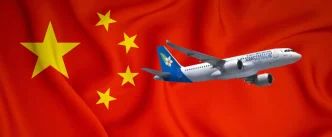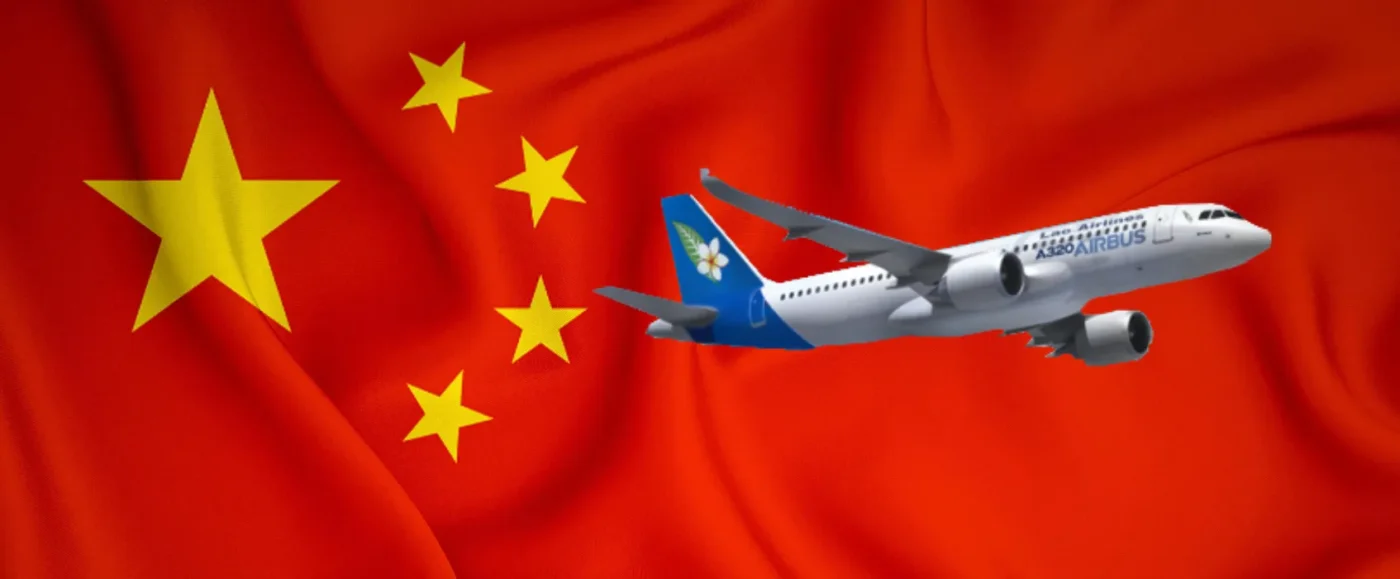In a move that could reshape Laos’ aviation landscape, the Lao government is weighing a significant proposal from the Commercial Aircraft Corporation of China, Ltd. (COMAC) to acquire a majority stake in Lao Airlines, the country’s national flag carrier. Announced by Prime Minister Sonexay Siphandone during a session of the National Assembly (NA) on June 11, 2025, in Vientiane, the potential deal is part of broader efforts to reform struggling state enterprises. However, the proposal has sparked debate over national sovereignty, economic strategy, and the future of a key national asset.
Reforming State Enterprises Amid Financial Struggles
Lao Airlines is one of four state-owned enterprises targeted for reform, alongside Electricite Du Laos, the Lao State Fuel Company, and Nayobay Bank. These entities have faced sustained financial losses, prompting the government to explore partnerships and restructuring to improve operational efficiency. Prime Minister Sonexay told the NA’s 9th legislature that COMAC’s proposal includes acquiring at least a 51 percent stake in Lao Airlines, a move that would grant the Shanghai-based manufacturer significant control over the airline’s operations.
The discussions follow a Memorandum of Understanding signed between COMAC and Lao Airlines in October 2024, marking the beginning of formal negotiations for a joint venture. As part of the process, an independent auditing firm is currently assessing the total value of Lao Airlines’ assets to establish a baseline for the deal. Yet, contentious issues remain, including COMAC’s request to exclude the airline’s existing debts from the venture agreement—a condition that has raised eyebrows among some lawmakers.
National Assembly Divided on Foreign Ownership
The proposal has elicited mixed reactions within the National Assembly. Valy Vetsaphong, an NA member representing Vientiane, expressed strong opposition to both the debt exclusion and the idea of ceding majority control to a foreign entity. “If the debt is cut out, Laos would do better to employ more competent executives or a CEO to manage the operation of Lao Airlines instead of selling a majority stake” she argued. Highlighting the airline’s strategic importance to national identity and connectivity, she cautioned against allowing external interference or subsidies that could compromise its independence.
Conversely, another NA member endorsed a more pragmatic approach, suggesting that a majority stake could be sold to COMAC for a defined period, after which Laos would have the option to repurchase shares and regain control. This arrangement, the member argued, could facilitate the transfer of technical expertise and operational know-how, potentially strengthening Lao Airlines in the long term. The debate underscores broader tensions between economic necessity and national pride, as Laos navigates the complexities of reforming state enterprises without losing sovereignty over critical sectors.
COMAC’s Growing Footprint in Laos’ Aviation Sector
COMAC’s interest in Lao Airlines aligns with its broader strategy to expand its presence in Southeast Asia’s aviation market. The Chinese manufacturer has already made inroads with the airline through a lease agreement for a COMAC C909 jet, which was inaugurated on April 12, 2025, at Pakse International Airport in southern Laos. Configured with 90 economy class seats, the aircraft currently operates on key domestic routes, including between Vientiane and Pakse, as well as Vientiane and Savannakhet. Lao Airlines has plans to extend these services to destinations in China, signaling a deepening partnership with COMAC.
As part of the proposed joint venture, COMAC has requested that Lao Airlines predominantly use its aircraft for commercial flights—a condition that builds on the existing integration of the C909 into the airline’s fleet. The manufacturer is also providing comprehensive support services to ensure compliance with international safety standards, a critical factor for an airline operating in a region with growing scrutiny on aviation safety. For Laos, a landlocked nation reliant on air travel for international connectivity, such support could be a significant boon, though it raises questions about long-term dependency on a single supplier.
Economic Implications and Regional Context
Lao Airlines, founded in 1976, plays a vital role in Laos’ transportation infrastructure, serving seven domestic locations and at least 10 international destinations. Its network is further bolstered by interline and codeshare agreements with over 30 global airlines, as well as charter flights to countries like China and South Korea. The airline’s strategic importance extends beyond economics, acting as a symbol of national identity and a gateway for tourism—a key driver of Laos’ economy. Any change in ownership could have ripple effects on how the country positions itself in the regional tourism and aviation markets.
The potential deal with COMAC comes at a time when Laos is grappling with broader economic challenges, including high public debt and limited fiscal space for infrastructure investment. Partnering with a foreign entity like COMAC could provide much-needed capital and expertise, but it also risks ceding control over a critical asset. Analysts note that similar arrangements in other Southeast Asian countries have yielded mixed results, with some partnerships boosting efficiency while others have led to concerns over diminished local autonomy.
Moreover, the financial terms of the deal remain under scrutiny. While exact figures for Lao Airlines’ debts are not publicly disclosed, COMAC’s insistence on excluding these liabilities from the joint venture suggests a cautious approach to risk on the part of the Chinese firm. For Laos, absorbing these debts independently could strain public finances further, especially if the government opts to retain a minority stake in the airline. The ongoing audit of Lao Airlines’ assets will be crucial in determining whether the proposed valuation aligns with national interests.
Public Sentiment and Strategic Concerns
Public reaction to the potential takeover remains varied, with limited official commentary available at this stage. Lao Airlines, as the national flag carrier, holds a special place in the public consciousness, often associated with national pride and sovereignty. Any perception of foreign dominance in its operations could provoke backlash, particularly if service quality or accessibility to domestic routes is affected. On the other hand, improved efficiency and expanded international routes—potentially facilitated by COMAC’s involvement—could win public support, especially among frequent travelers and businesses reliant on air connectivity.
Strategically, the deal also raises questions about Laos’ position within China’s broader regional ambitions. Beijing has long sought to strengthen economic ties with Southeast Asian nations through initiatives like the Belt and Road Initiative, and COMAC’s push into Laos’ aviation sector could be seen as an extension of this influence. While the Lao government has emphasized that no final decision has been made, the outcome of these negotiations will likely serve as a litmus test for how the country balances economic partnerships with national interests.
Looking Ahead: A Defining Moment for Lao Airlines
As negotiations with COMAC progress, the Lao government faces a delicate balancing act. On one hand, the infusion of capital and expertise from a major aircraft manufacturer could revitalize Lao Airlines, addressing years of financial losses and positioning it as a competitive player in the regional aviation market. On the other, ceding majority control to a foreign entity risks undermining national sovereignty and could set a precedent for similar deals in other state enterprises.
The National Assembly’s ongoing deliberations will be critical in shaping the terms of any agreement, particularly regarding debt exclusion and the timeline for potential share repurchasing. Meanwhile, the public and industry stakeholders await clarity on how such a partnership might impact airfares, route expansion, and service quality. As Laos charts its path forward, the fate of Lao Airlines remains a pivotal issue—one that could redefine the intersection of economic reform and national identity in the years to come.















